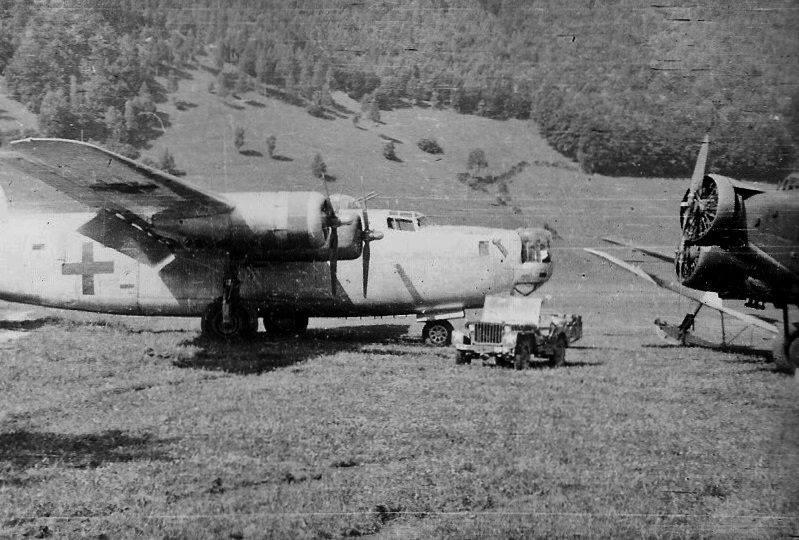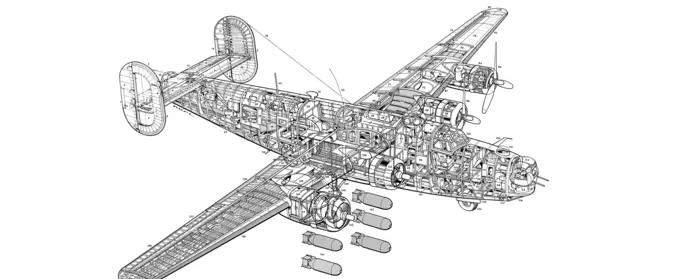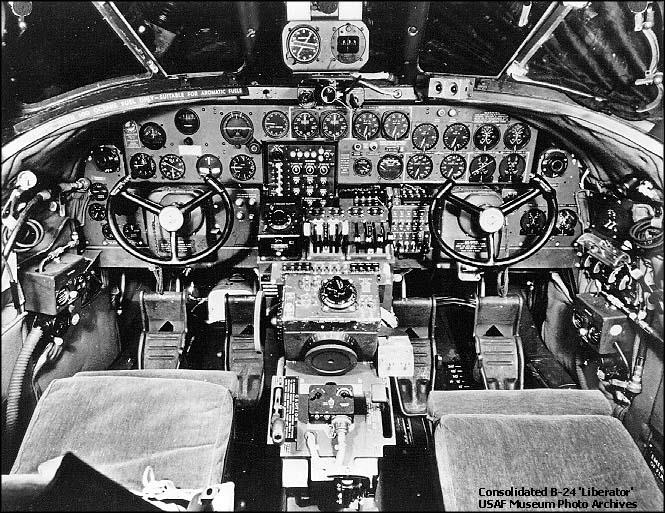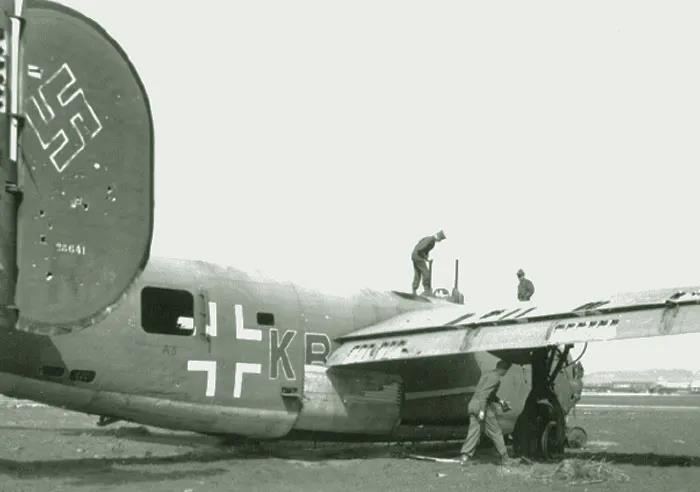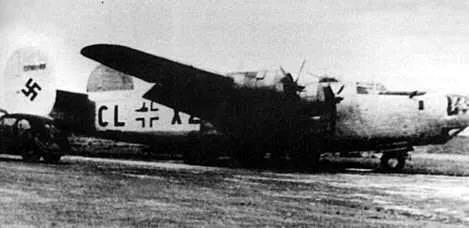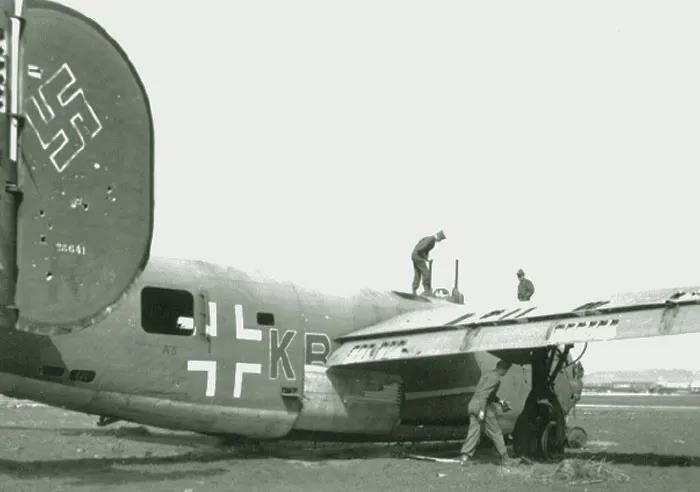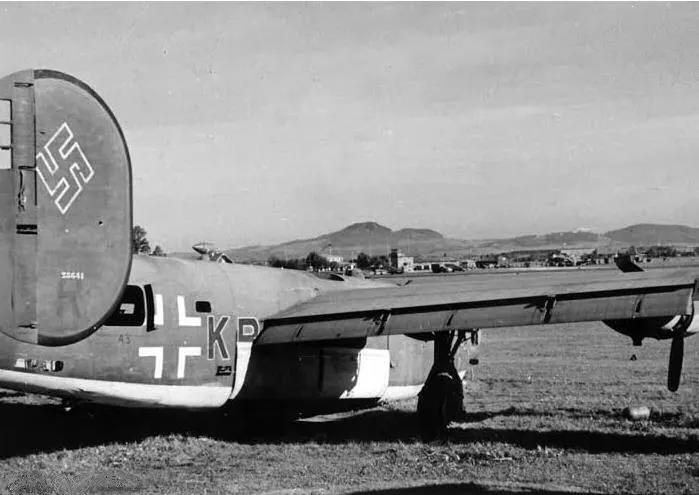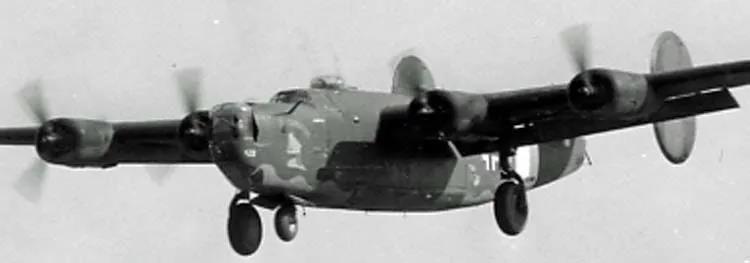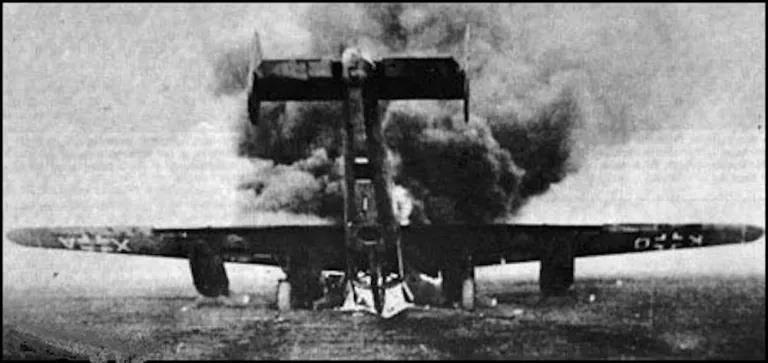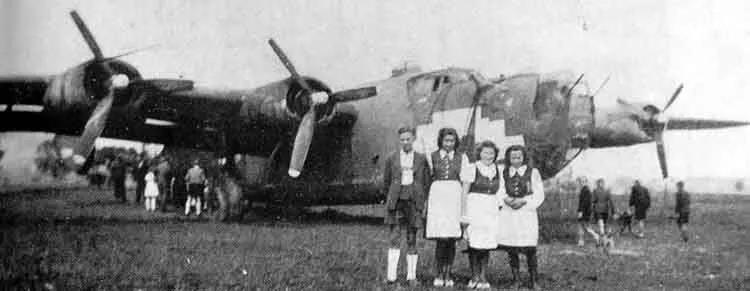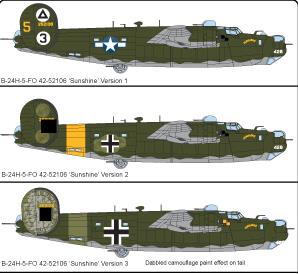| Type | 10 seat heavy bomber (B 24G) |
| Engine | 4 Pratt & Whitney R-1830-43 Twin Wasp |
| Dimensions | Length 20,21 m , height 5,45 m, span 33,53 m , wing area 97,36 m2 , |
| Weights | Empty 14789 kg, loaded 24948 kg, max. take off weight 29030 kg |
| Performance | Max.. speed 488 km/h, cruising speed 322 km/h , range 3700 m, endurance , service ceiling 9754 m , climb 277 m/min. |
| Armament | Eleven 12.7 mm machine guns (three in the nose, two in the dorsal turret, two in the tail turret, two in the ventral turret and one each in the left and
right side windows), maximum - 3992 kg of bombs, standard: up to eight 1100 lb bombs in the bomb bay. Under the wings there was the possibility of
hanging two 4000 lb bombs (used extremely rarely). Later models could carry eight 1,600-pound bombs.
|
| Type | Werk.Nr | Registration | History |
| B-24H-15-DT | 41-28779 | KO+XA | KG 200, E.Stelle Werneuchen. After receiving flak damage on a mission to Politz on 20 June 1944, B-24H 41-28779 of the 564BS, 389BG force landed. Repaired and flown by the Luftwaffe. It crashed on take off at Wackersleben on 13 April 1945, and was deliberately set alight by the Germans. |
| B-24G-20-NT | 42-78106 | NF+LF | KG 200. B-24G “Cherry II” 42-78106, of the 15th AF, 758th BS, 460th BG was captured by the Luftwaffe, after landing at Vorarlberg, Germany during a raid against Munich 9 June 1944 |
| CA+XZ | |||
| B-24G-10-NT | 42-78247 | CL+XZ | B-24G Liberator 42-78247 of the 765th BS, 461st B G coded CL+XZ. Captured 4 October 1944. |
| CL+YC | |||
| B-24D | 41-23859 | Blonde Bomber II. This 98th bomb group B-24D 41-23859, damaged and off course after a raid on Naples on 20 February 1943, mistook the Sicilian airfield at Pachino for Malta and made a forced landing there. It was repainted with Italian markings for pictures but was then sent to the Luftwaffe evaluation centre at Rechlin where it was found after the war. | |
| B-24D | 41-24294 | B-24D 41-24294 of the 376th BG, 515th BS, repainted with Romanian markings and used for fighter training. | |
| B-24H | 41-28641 | A3+KB | Consolidated B-24H Liberator (Serial No. 41-28641), coded A3+KB, captured US bomber, ex-735th BS, 453rd BG, USAAF. Captured 4 February 1944. |
| B-24H | 42-52106 | Consolidated B-24H Liberator 42-52106 719th BS, 449th BG, 47th BW, 15th AF, USAAF. Captured 29 February 1944. |
